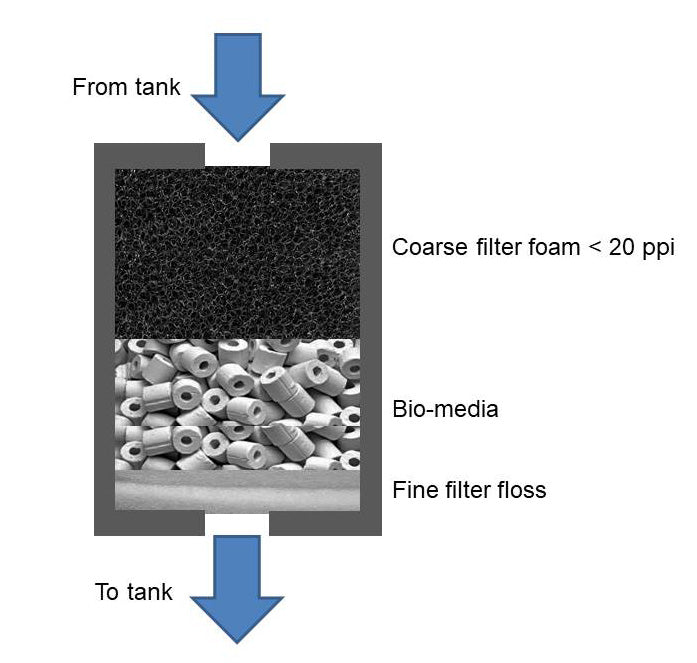Your Cart is Empty
Filter media layout and sequence for planted tank
January 20, 2025 3 min read

General approach
Bio-media is the designated layer in which bacteria are allowed to grow and build up over time. These bacteria break down organic waste and also oxidise harmful ammonia into relatively harmless nitrates. This layer should not be disturbed as it takes a long time for bacteria to colonise filter media;
The bio-media layer should therefore be protected from debris to prevent clogging - bio-media needs good flow through it for the aerobic bacteria action to be effective. A sponge media layer usually acts as a shield, capturing coarse particles that would otherwise easily clog the bio-media, and can be washed/replaced frequently without disturbing the bacteria in the bio-media;
Both sponge and ceramic media can play the role of bio-media for bio-filtration. The main advantage of ceramic media is its durability and the fact that it does not collapse. Specially designed ceramic media can provide areas for anaerobic bacteria to act - allowing for the reduction/removal of nitrates. Sponge media is significantly cheaper and lighter overall. Very fine filter floss/sponge can be used to trap fine particles in the water to give high water clarity.
Basic layout
A basic filter layout would be as follows:
The first stage consists of some form of coarse mechanical media to trap large particles and prevent debris from clogging the rest of the filter. This layer is designed to be periodically flushed during maintenance. There can be a surprising amount of organic debris in a planted aquarium. Cleverly designed filters such as the Oase Biomaster range (see review here) have a separate pre-filter compartment that can be removed and cleaned without dismantling the whole filter.
The second stage consists of biological media, whether ceramic media or filter sponges/large surface media, which provide a home for bacterial colonisation. This is where the ammonia cycle takes place and the bacteria break down organic waste into less harmful substances. This layer should not be disturbed often; if it is easily blocked, it is a sign that the coarse filtration media (first stage) is not doing its job.
The final stage consists of smaller pore filter foam; this is used to trap fine particles before the water is returned to the tank. Some tanks do well without this stage. Alternatively, fine filter fleece can be used, which clogs easily but traps very fine particles; many people may bypass this just to reduce maintenance.
In many setups, there may be many more layers in between as people choose layers that suit their particular setup.
Using purigen/carbon in layout
Purigen, if used, should be placed at the end of the chamber to capture the finest particles before the water re-enters the tank. It must be bleached regularly to replenish it.
When polishing the water, instead of using just one layer of coarse filter sponge, a medium filter sponge is placed after the coarse sponge. This will trap smaller particles and prevent them from clogging the bio-media/fine filter media.
Layout in filters with pre-filter chambers

This is the layout we use in most of the tanks at The 2Hr Aquarist. We use filters with fine filter sponges as pre-filters; these pre-filters are great at removing debris, allowing the entire main chamber (as above) to remain untouched for months (about 4 to 6 months).
unlock your true potential
Grow anything, defeat algae, create amazing aquascapes



























